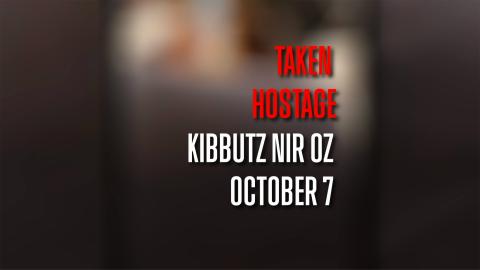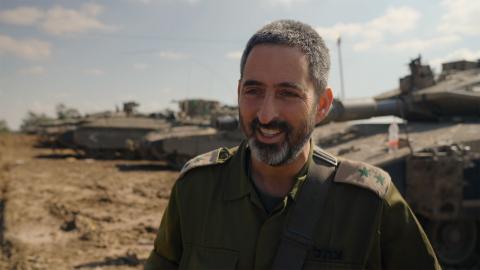Border War: America's 'Watchmen on the Wall'
YUMA, Ariz. -- While politicians in Washington are stuck arguing about America's broken immigration system, U.S. Border Patrol agents are working non-stop to protect our homeland.
"We're looking for footprints in the sand, disturbances, or whatever may be," Agent David Lines told CBN News in the Sonoran Desert near Yuma, Arizona.
Lines and his fellow agents in the Yuma Sector Border Patrol are on the front lines of the immigration battle.
They constantly search for people illegally crossing the Mexican border, whether it's in the hot desert, along a highway checkpoint, or the nearby Colorado River where Agent Tomas Diaz knows he's being watched.
"I know we're being observed at all times. They know we're here right now," Diaz said.
The Yuma Sector Border Patrol is responsible for roughly 126 miles of the U.S. border. Part of their area is located in the Imperial Sand Dunes in California where they guard an eight-mile long floating fence.
The fence is unique in that a machine makes sure it won't lose height even if sand builds up around it. Such tools help agents like Lines catch those trying to make an illegal run across the border.
"It gives me a sense of accomplishment in trying to keep the people out that are trying to do our country harm," Lines told CBN News.
"There are people every day that try to cross," he continued. "Some of them are humble families, but others are people that have intentions of doing things to our country that obviously we don't want done here."
A Game of Cat and Mouse
According to Border Patrol Agent Wes Burch, illegal aliens with bad intentions are consistently coming up with creative ways for beating the system.
"The smugglers are only limited by their imagination," he said. "They have unlimited funding. They can hide things in every part of the vehicle that you could think of."
Some of those real life examples include hiding cocaine in an oil pan and heroin in a hay bale. Some people have actually tried to hide under wood on the back of a truck or even inside a cramped suitcase.
That's why highway checkpoints complete with canine dogs are crucial.
"It's kind of a cat-and-mouse game," Agent Burch explained. "They're going to try something today. We're going to try and beat that. We're going to go out and try to one up them and then I know tomorrow, whatever we find today, tomorrow they will be trying something else."
While Americans heard about the massive problems along the Texas border, the Yuma Sector is considered one of most secure in the nation.
The Difference Technology Makes
In 2005, they had almost 140,000 apprehensions. Nowadays, it's dropped to around 6,000. Money has made a huge difference.
Under President George W. Bush, U.S. Border Patrol spending skyrocketed, going from roughly $4 billion in 2001 to $12 billion in 2008, when the former president left office.
Much of that money went into the Yuma Sector and it translated into triple the number of agents, better technology, and a fence along every mile of this sector.
"Back in the day, there only used to be a barbed wire fence right here," Agent Lines told CBN News.
"One-hundred yards to the south of us right now is Mexican Highway 2. So what a lot of the people would do is they would take their vehicles off road, come through the desert, and get on some of those roads that we have going north," Lines explained.
On the Colorado River, separating Mexico from Arizona, better technology has helped immensely.
"We also have sensors that allow us to detect an entry and then we see what's going on," Agent Diaz said.
Border towns like San Luis, Arizona, have seen the most progress - no more barbed wire and just a flashlight to keep out illegals.
"It really comes down to the manpower and the infrastructure," Agent Doug Choi told CBN News from San Luis, Arizona.
"Not only is it the triple layer fencing, but we also have the stadium lights and the mobile light units because there are areas where we have to be vigilant at all times and when it gets dark, it becomes much harder."
Fence Not a Solution
Choi quickly points out that a fence won't stop people from trying to get into America. It just makes their job a bit easier.
"That fence is there as a deterrence. That fence is there to give agents the time to respond, but it's just another variable that is in that equation," he said.
If creative drug smugglers decide not to hop the fence, they've also dug tunnels to get across the border. Fortunately, agents have caught on to those operations, too, busting one that was extremely sophisticated.
"This was a completed tunnel," Choi said. "It had lights, it had vents for people, and it was most likely going to be used to smuggle in narcotics and illegal drugs."
"So, for us stopping tunnels is just as important in protecting our borders as stopping illegal aliens, criminals, terrorists, and terrorist weapons as well," he said.
The Terrorism Question
Nowadays, with added terror threats, agents are on high alert. The Department of Homeland Security recently issued a warning that ISIS terrorists are looking to cross the U.S.-Mexican border.
While the U.S. Border Patrol works to keep out potential terrorists, they must also be mindful of the other force trying to get into America: all of the families crossing illegally in search of a better life.
Many don't make it, dying in the sizzling Sonoran Desert, so agents try to help when they can.
Beacon Sirens are set up in the desert that illegals can push if they want to give up the fight. Safety is always a priority.
"I don't want to see agents getting hurt," Agent Tomas Diaz said from his perch on the Colorado River. "I don't like to see migrants or civilians getting hurt, much less by drowning."
It's all in a day's work for the men and women guarding our borders. Some have died protecting the country they love while politicians in Washington argue about the politics.




